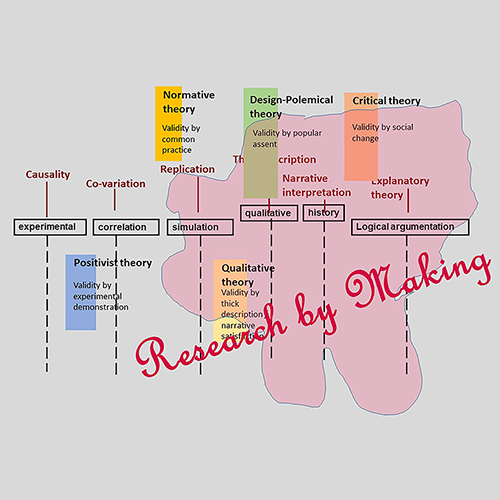A continuum of measures of validity for research in the making fields
DOI:
https://doi.org/10.7577/formakademisk.2216Abstract
With the growth of “making” doctorates in design-related fields comes the need to define how dissertations in these fields achieve doctoral robustness. This paper first suggests that this new category of doctoral degree is justifiable from a historical point of view. A brief survey of how the PhD emerged in the European tradition, and its trajectory through the centuries, reveals there have been previous changes in the areas of study deemed worthy of doctoral distinction. On this view, we can justify awarding doctorates in the “making” fields, from art to architecture, on historical grounds. The aspect that has remained constant through the years, however, is that the doctoral degree signifies inclusion in a community of learners and, in turn, doctoral learning has positively impacted human community in general. Making doctorates should therefore not be so unique and exclusive that they separate themselves from the historic community-building role doctorates have played. The second part of this paper suggests a way towards this inclusivity. This paper proposes a “continuum of measures of research validity” to help researchers (and evaluators) in making doctorates anchor their research logic in measures that have roots in scientific method. The continuum is purposefully broad, beginning with standard measures of scientific research, but stretching those measures all the way to fictive constructions. Within this broad continuum, dissertations in the making fields can comfortably fall within the scope of doctoral research using expanded definitions for measures of validity. The paper concludes with four recommendations for candidates in the making fields, for the committees that guide them, and for the emerging community of making doctoral research as a whole.

Downloads
Published
How to Cite
Issue
Section
License
Authors who publish with this journal agree to the following terms:
- Authors retain copyright and grant the journal right of first publication with the work simultaneously licensed under a Creative Commons Attribution 4.0 License that allows others to share the work with an acknowledgement of the work's authorship and initial publication in this journal.
- Authors are able to enter into separate, additional contractual arrangements for the non-exclusive distribution of the journal's published version of the work (e.g., post it to an institutional repository or publish it in a book), with an acknowledgement of its initial publication in this journal.
- Authors are permitted and encouraged to post their work online (e.g., in institutional repositories or on their website) prior to and during the submission process, as it can lead to productive exchanges, as well as earlier and greater citation of published work (See The Effect of Open Access).
- The author(s) must manage their economic reproduction rights to any third party.
- The journal makes no financial or other compensation for submissions, unless a separate agreement regarding this matter has been made with the author(s).
- The journal is obliged to archive the manuscript (including metadata) in its originally published digital form for at least a suitable amount of time in which the manuscript can be accessed via a long-term archive for digital material, such as in the Norwegian universities’ institutional archives within the framework of the NORA partnership.
The material will be published OpenAccess with a Creative Commons 4.0 License which allows anyone to read, share and adapt the content, even commercially under the licence terms:
This work needs to be appropriately attributed/credited, a link must be provided to the CC-BY 4.0 licence, and changes made need to be indicated in a reasonable manner, but not in any way that suggests that the licensor endorses you or your use.



